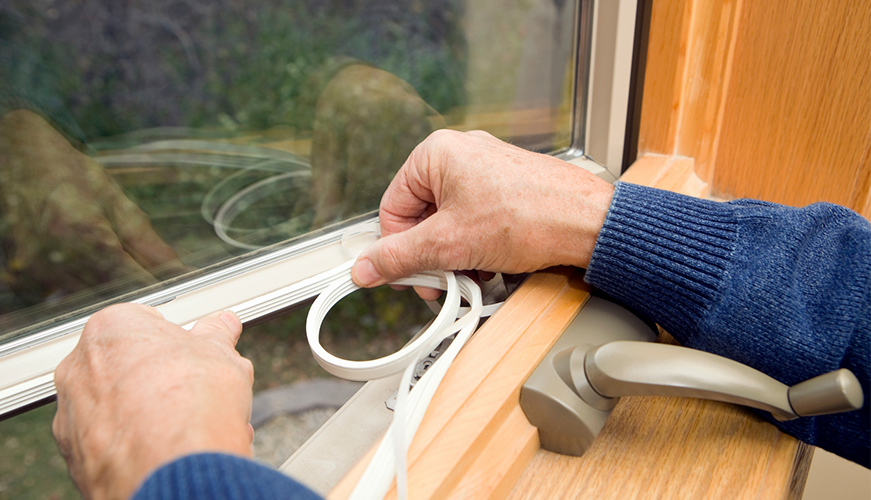As colder weather approaches, ensuring that your home is properly insulated is essential for maintaining a comfortable indoor climate and boosting energy efficiency. Poor insulation and air leaks are two of the biggest contributors to heat loss, forcing heating systems to work harder and leading to higher energy bills. By understanding insulation ratings, common problem areas, and energy-saving techniques, you can prepare your home for the winter months while reducing heating costs.
What Is an R-Value and Why Does It Matter?
The R-Value is the key measurement used to determine how effective an insulation material is at resisting heat flow. The higher the R-Value, the better the insulation material prevents heat loss or heat gain, making your home more energy efficient. R-Values vary based on insulation type, thickness, and density, and they are crucial in choosing the best insulation for your home.
R-Values are particularly important for homeowners looking to reduce energy consumption and lower heating and cooling costs. The right insulation will help prevent thermal bridging, which occurs when heat escapes through poorly insulated areas. Different parts of the home require different R-Values, and insulation performance also depends on climate zones.
Climate-Based R-Value Recommendations
The U.S. Department of Energy recommends specific R-Values based on climate zones. These guidelines ensure that homeowners get optimal energy efficiency and reduce heating and cooling costs:
- Warm Climates: R-30 to R-49
- Moderate Climates: R-38 to R-60
- Cold Climates: R-49 to R-60
To determine how many inches of insulation you need, divide the recommended R-Value for your climate by the R-Value per inch of your insulation type.
Average R-Values per Inch of Common Insulation Types
- Fiberglass (blown): R-2.2 – R-2.9
- Fiberglass (batts): R-2.9 – R-3.8
- Cellulose (blown): R-3.1 – R-3.8
- Rock Wool (loose): R-2.2 – R-3.3
- Foam (sprayed): R-3.6 – R-8.2
For example, if you live in a warm climate and use fiberglass batts insulation, you would need between 7.9 and 16.9 inches of insulation for maximum efficiency (R-30 ÷ 3.8 = 7.9 inches and R-49 ÷ 2.9 = 16.9 inches).
Assessing Your Home’s Insulation
While installing insulation during construction is most cost-effective, older homes may require reinforcement or upgrades over time. To evaluate your home’s insulation, follow these steps:
- Check Existing Insulation Levels:
- Measure the thickness of insulation in attics, walls, and crawl spaces.
- Multiply the insulation depth by the R-Value per inch to determine efficiency.
- Inspect Insulation in Key Areas:
- Attics (Primary heat loss area)
- Exterior walls (Can be checked through power outlets—turn off electricity, remove cover, and measure insulation depth)
- Basements, crawlspaces, and unheated areas
- Around ductwork and pipes
- Schedule a Home Energy Audit:
- A professional energy assessment can detect insulation gaps and air leaks.
- If unavailable, conduct a DIY home inspection by checking for drafts and cold spots.
Sealing Air Leaks for Maximum Efficiency
Gaps and cracks in your home can significantly increase heat loss. To maintain warmth and improve efficiency:
Common Leak Areas to Inspect:
- Exterior corners and foundation gaps
- Windows and doors (weather stripping needed)
- Attic hatches and fireplace dampers
- Electrical outlets and switch plates
- Baseboards and vents
- Gas and water pipes entry points
Effective Sealing Techniques:
- Use caulk to seal cracks around doors, windows, and exterior gaps.
- Apply weather stripping to door and window frames to prevent drafts.
- Seal ducts with foil tape or mastic sealant to prevent heat loss through the HVAC system.
The Cost and Savings of Proper Insulation
Upgrading insulation is an investment that pays for itself through energy savings. The cost of insulating a 1,500 to 2,500-square-foot home typically ranges between $1,500 and $5,000, depending on materials and labor. However, homeowners can save up to 20% on heating and cooling costs by properly insulating and sealing air leaks (Department of Energy).
Enjoy a Cozy and Energy-Efficient Winter
Ensuring that your home is properly insulated keeps you warm during winter, reduces energy waste, and lowers heating costs. Whether you’re adding new insulation, reinforcing weak spots, or sealing leaks, taking these proactive steps will provide long-term comfort and efficiency—just in time for the colder months ahead!



